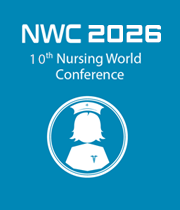Title : An ethical positioning system for solving ethical dilemmas
Abstract:
It is typical in nursing education to value critical thinking and problem solving as necessary tools. Students practice these skills throughout their education, and generally feel confident in their ability to arrive at acceptable solutions. At some point, however, nurses are faced with particular problems for which they do not feel prepared. In today’s post-pandemic healthcare environment, moral distress is at its highest point. Due to staffing issues, many nurses feel they cannot deliver the care they expect of themselves, the care they know their patients deserve. The ANA Code of Ethics provides a guideline for nurses in ethical situations. When nurses face ethical dilemmas, they are taught to consult the code, and its nine provisions. The nine provisions have many interpretative statements, thus the whole code, which is 25 pages, may be unwieldy for novices and in emergencies. Students in nursing ethics courses are also encouraged to apply ethical principles such as beneficence, veracity, respect, justice, fidelity, autonomy, and accountability. None of these tools seem to be inclusive or practical when needed emergently. As a result, this Ethical Positioning System was developed to serve as a simple but practical, and easily accessible, tool, to help nursing students who face ethical dilemmas. The foundation of this system is the nursing process, which students encounter early in a nursing program. This process is a problem- solving tool, fundamental to nursing practice. Nurses use this process automatically with every patient encounter. It became apparent that the same process could be adapted into a model for dealing with ethical dilemmas. The Ethical Positioning System consists of six steps, each essential to the satisfactory resolution of an ethical dilemma.
Step One: Assessment: As in the nursing process, this first step requires gathering all available information about the case. This includes all the persons involved in the situation, as well as those concerned with the decision-making process. All data are examined.
Step Two: Dilemma Nurses are taught to analyze all the data to arrive at a problem statement. This may be one or a few sentences that define the ethical nursing problem. This statement is the nursing dilemma, or the element of the situation that could result in moral distress.
Step Three: Planning: The third step, planning, involves addressing real and potential solutions, even those tentative solutions that may well be eliminated. Planning includes listing the pros and cons, or costs and benefits, of each solution. As part of this step, nurses are taught to consider which ethical principles, and which provisions of the ANA Code of Ethics, enter into the decision. Planning must be a deliberate attempt to isolate evidence that the decision is indeed based on principles that have been established as ethical in nature.
Step Four: Diagram: This additional step to the nursing process involves making a diagram of the problem and the tentative solutions, with the pros and cons. Looking at the diagram of alternatives, it may be that different principles and different provisions of the Code come into play. The nurse marks those on the diagram. This conceptual step is an important part of making the best choice.
Step Five: Implementation: The nurse Implements the choice, deciding how best to apply the chosen alternative. The choice, of course, need not be ethical only, but may be practical. It must be doable.
Step Six: Evaluation: The final step involves evaluating the effectiveness of both the process and the outcome of the solution. This is the step that assures that the student, or nurse, will not only be able to use this model repeatedly, but will learn from each experience and build proficiency.



